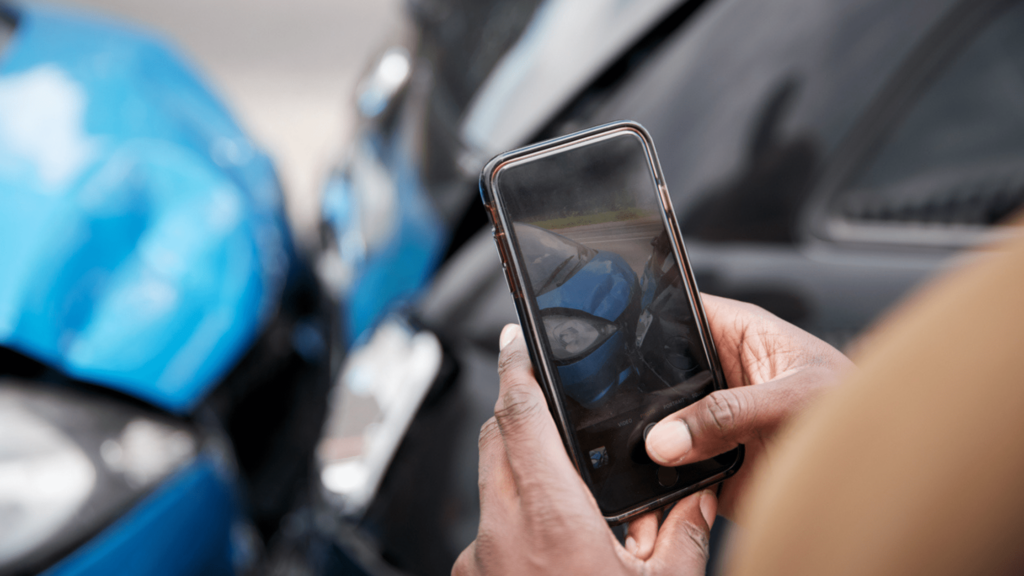- News
- How Proper Documentation Can Win Your Personal Injury Case
How Proper Documentation Can Win Your Personal Injury Case

Make no mistake — evidence can be key to winning legal battles in the courtroom. In fact, without our deep familiarity with persuasive evidence to support personal injury claims, it’s highly unlikely we’d have won nearly $2 billion in settlements for our clients over the years. So let’s take a few moments to answer some frequently asked questions about evidence, which can help you be better prepared if you’re ever unfortunate enough to become the victim of a bad driver, an unsafe workplace, a careless physician, or some other negligent individual or company.
Technically Speaking, What Is Evidence?
Evidence is anything you can use to prove the facts of a case. It can include physical elements gathered at the scene of an accident – for example, skid marks left on pavement, video footage from traffic cameras, photographs taken by passers-by, or the results of breathalyzer tests administered by law enforcement officers. But evidence might also consist of eyewitness statements, voice recordings, even visible damage to vehicles or medical reports describing injuries sustained by accident victims. Evidence can also extend to courtroom testimony from expert witnesses, such as brain surgeons, traffic control engineers, accountants and financial advisors – or even such obscure and hard-to-find specialists as accident reconstructionists. If you’d like to know more about the technical definition of evidence as it applies to the legal system, check here for what the Cornell University Law School has to say on the subject.
Are There Other Forms of Evidence?
Yes, as technology and science evolve, what might be considered acceptable evidence also evolves. Before the early 20th century, for example, fingerprints were unknown to American law enforcement, though they had already been used in China to identify specific people for hundreds of years. The first domestic case using fingerprints to successfully prosecute a criminal didn’t take place until around 1910. Now it’s become a standard practice in criminology worldwide. DNA evidence, too, has only become a legally accepted form of evidence within the past half century, starting in 1986 to be exact.
As forensic techniques advance, there may well be many more types of evidence that will come into play over time. For example, it’s only been in the last 20 years or so that evidence gathered from computers, the internet, social media, and cybercrime experts has been widely accepted by law enforcement, and we can only imagine how evidence connected to these advances and others will someday find their way into courtrooms – not to mention personal injury cases – across the country.
To sum up, the legal profession currently breaks down evidence into four general categories: video (including film and audio recordings), physical (skid marks, blood tests, DNA and the like), documentary (digital files and good old-fashioned paperwork), and witness (which can include testimony from eyewitnesses, as well as from character and expert witnesses). We’ve briefly touched upon three of those four already in this article, but the fourth – documentary evidence – bears some further discussion here.
Documentary evidence broadly refers to any form of paper or other records that can be used in prosecuting criminals or proving facts in a personal injury case. For instance, medical records, CT-scans, MRI reports, and x-rays would fall into this category. Business files and accounting records can also find their way into case law as documentary evidence. Along those same lines, your own personal pay stubs and tax records could come in handy as documentary evidence to help prove the extent of lost income or other financial harm you’ve experienced if someone’s negligence renders you to injured and unable to work.
How is Evidence Obtained – and by Whom?
Sometimes it’s easy. If you’ve been injured in an accident, it’s highly likely you’ll almost automatically accumulate a large pile of vital medical records that can serve as evidence. Similarly, as your lawyers, we can obtain police reports, gather eyewitness statements, and put together a raft of other evidentiary elements that we can use to prove your personal injury case in court.
You can also gather useful evidence yourself! Taking pictures at the scene of an accident can be a valuable first step in helping prove who’s responsible for the injuries you’ve suffered. But please be careful! Don’t become distracted and make things worse by causing secondary collisions … or worse draw attention to yourself so that other people present at the incident are tempted to further victimize you! This helpful article offers more hints on how to personally gather evidence that might help support your case.
At other times, however, things become more complicated, and we often find it necessary to uncover evidence in different ways – doing the legwork required to dig up relevant security camera footage from businesses located near the scene of the incident… identifying and finding expert witnesses whose testimony is essential to prove the effects, extent and duration of a victim’s injuries… hiring private investigators to uncover dirty secrets that guilty defendants are trying to hide… persuading (or even compelling by subpoena) reluctant eyewitnesses to describe what they saw transpire. Needless to say, to win your case we’ll take any or all of these steps.
Can Evidence Be Used Against the Victims in a Personal Injury Case?
Absolutely, 100% yes! Our number one piece of advice: Use common sense when posting anything on social media sites. Likewise, you’d be unwise to send text messages or emails describing your condition even to friends who’ve asked about your circumstances. It’s tempting to say everything is okay when it’s not, just to save face or to prevent loved ones from worrying about you… but by attempting to reassure people you’re fine, you may be seriously damaging your personal injury case down the road.
Finally, we should point out that all forms of evidence must be protected and handled appropriately so their chain of custody is unassailable. As experienced personal injury attorneys, we understand how to effectively protect evidence to make certain its authenticity and veracity can’t be questioned. We also do whatever is needed to preserve and back up evidence so that nothing will be inadvertently misplaced or become subject to doubt when it’s ultimately presented during legal proceedings.
What’s the Best Method to Assemble Evidence?
As you might have gathered from this article and others we’ve posted here, we’re well equipped to put together and to present in court all the various types of evidence needed to support our clients’ cases after they’ve been hurt. We understand they’re likely experiencing significant pain and suffering – and that they need to do the hard work of recovery and rehabilitation – so we can generally collect all the evidence we need without having to involve clients. If all that sounds like it would help you get through a difficult time in your life as painlessly as possible, give us a call at 855-MIKE-WINS (855-645-3946) and let us get started working on your behalf. A simple phone call or an online request to connect with an attorney is all we need to start the ball rolling.

Content checked by Mike Morse, personal injury attorney with Mike Morse Injury Law Firm. Mike Morse is the founder of Mike Morse Law Firm, the largest personal injury law firm in Michigan. Since being founded in 1995, Mike Morse Law Firm has grown to over 200 employees, served 40,000 clients, and collected more than $1.5 billion for victims of auto, truck and motorcycle accidents. The main office is in Southfield, MI but you can also find us in Detroit, Sterling Heights and many other locations.








